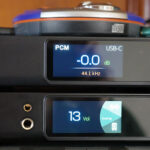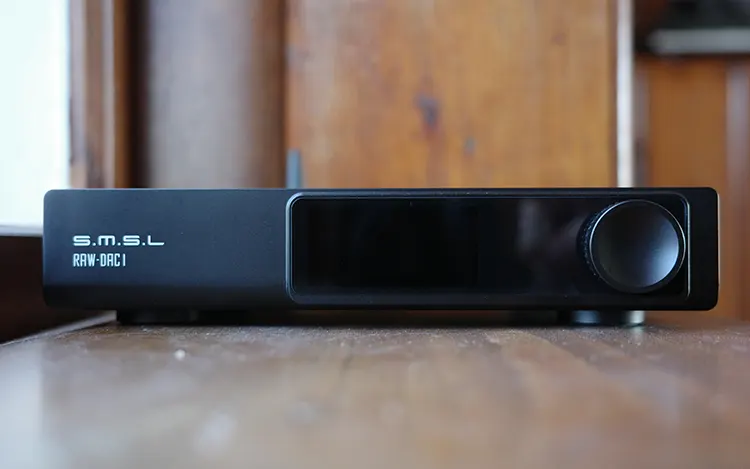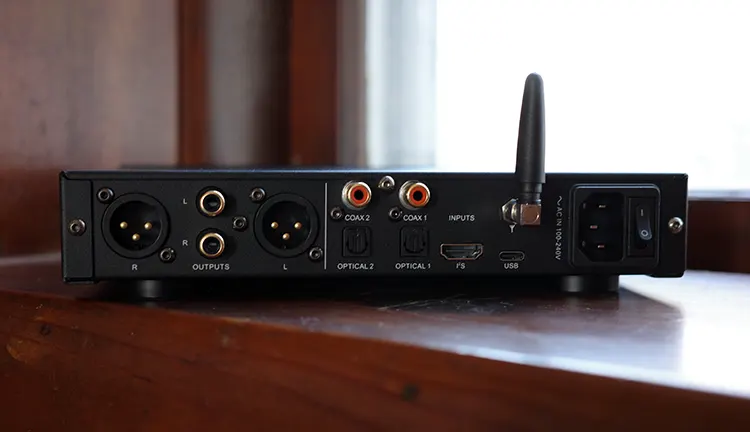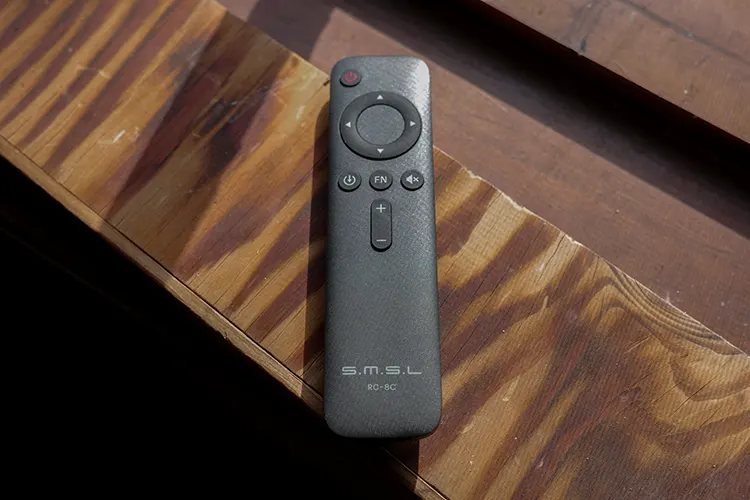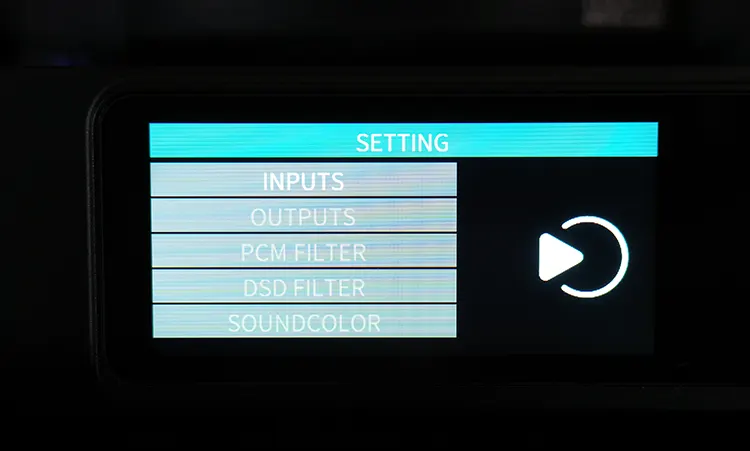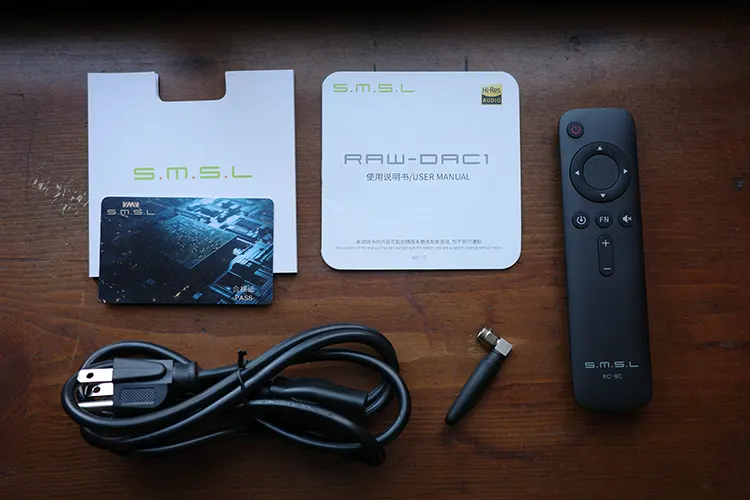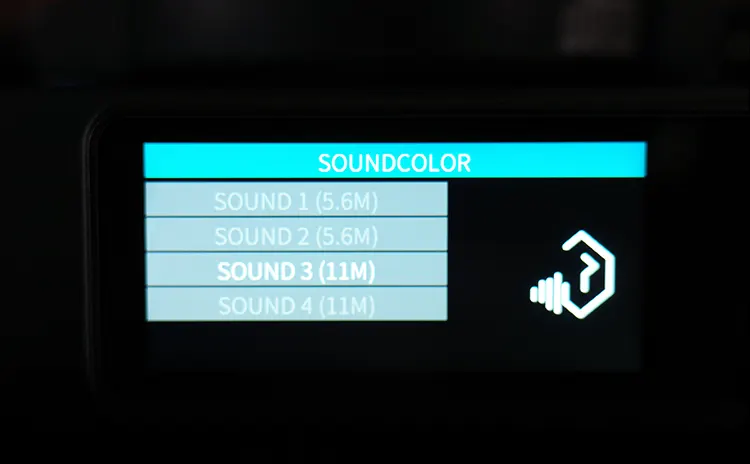Today, Lynn reviews the SMSL RAW-DAC1, a new desktop AK4499EX-equipped balanced output DAC capable of up to DSD512 and LDAC wireless decoding. It is priced at $499.99.
Disclaimer: I received this sample in exchange for my honest opinion. Headfonics is an independent website with no affiliate links or partnerships. I thank Shenzhen Audio and SMSL for their support.
Click here to learn more about SMSL products we have previously reviewed on Headfonics.
This article follows our current scoring guidelines, which you can find in more detail here.
When I reviewed the RAW-MDA1, I found it to represent a step forward for SMSL, away from their familiar black box. Tucked inside were some new electronics, separating the “RAW” moniker from the rest of the line.
Moving away from their plethora of product releases, the RAW series promotes a mid-fi sound that still follows the tradition of SMSL but with a more upscale look, feel, and sound.
The $449.99 SMSL RAW-DAC-1 represents the purity of digital-to-analog circuitry following those same principles.
While the AK chipset may not be known for its purity in sound, SMSL has worked its magic to promote a stand-alone DAC that can go against others in this market and do so without shame.
The multitude of inputs allows for use across many different sources, which many others do as well. But here, it adds to the excellent representation of what SMSL might stand for: quality offerings at an affordable price. The RAW series moves upscale but does not forget from whence it came.

Features
The RAW-DAC1 is built around the AK4191+AK4499EX chipset, the same DAC setup in the SMSL SU-9 Ultra. The RAW-DAC1 also boasts the (3rd gen) XMOS XU-316, which supports up to 32-bit/768kHz and DSD512. In addition, it has full support for MQA and MQA-CD.
All of the other usual source options are present, including Bluetooth 5.1 with LDAC and aptX HD.
One interesting addition is an I²S input, which reduces jitter and utilizes a direct digital connection for more precise and transparent audio. XLR out is a plus, especially since its partner, the RAW-HA1, has XLR in.
There’s a specially designed, built-in shielded power supply inside, enhancing power efficiency and lowering power consumption while keeping external noises to a minimum.
There is a new dual UI design that gives you 2 distinct display styles to choose from and the same clear and easy-to-use settings menu underneath. I appreciated this on the HA1, and this follows suit.
Design
The physical design of the SMSL RAW-DAC1 carries forward the familiar aesthetic of the RAW-HA1. The plain black box can unassumingly fit into your system without bother.
A tempered glass panel on the front houses the 2.33-inch display. To the right of the display is the function knob used to adjust the volume and navigate the system menu.
The rear panel offers a comprehensive range of inputs and outputs, including both XLR and RCA output connections. Featuring dual coaxial, dual optical, USB-C, I2S, and Bluetooth inputs helps round out a full Monty of connectivity options.
Additionally, a small power switch is positioned beside the power socket. Once turned on, the remote can be used for further on/off to put the RAW-DAC1 in standby mode.
The RAW-DAC1 includes a fully-featured remote control, allowing convenient access to all settings when the device is out of reach.
Even with the smaller screen, changing between settings was easy, especially if you chose the visual option of bitrate with larger numbers (universal setting). The graphics setting adds in the source.
I/O
Inputs and outputs are separated nicely on the back, with plenty of space for accessing all inputs and outputs. There was a time when SMSL in/outs were not as well thought out as they are now, and I appreciate that extra bit making our life easier.
With two coax and two optical inputs, you can run a dedicated CD player, streamers, or your DAP/PC through the USB-C. The additional I2S input makes for an easy connection to your CD player or streamer with a quality connection.
Qualcomm’s Bluetooth 5.1 rounds out the inputs, while outputs of XLR 4-pin and RCA allow for connection to powered speakers or a headphone amplifier for use. Having the ability to upgrade your DAC option using the RAW-DAC1 might be its greatest benefit.
Controls
Having the remote is a valuable part of the RAW-DAC1 experience. You can connect the RAW-DAC1 to an external amplifier, such as the SMSL RAW HA1 and speakers and just like the HA1, you can access all submenus with either the volume knob or remote.
Also, like the HA1, the FN key for options can be used to determine whether you want it to control outputs or Bluetooth functionality. With easy access through the large round button on the remote, you can easily change this.
The UI function key can also change the display to a more traditional layout, which reads better from a distance than the “graphic” option, with more information presented on the screen as well.
However, on the RAW-DAC1, I preferred the graphic setting. So when using the two together, I kept one on each setting, alternating between each setting.
The easy-turn volume knob doubles as the function access when you are not using the remote. The rounded-in feel of the knob gives a nice tactile feel to it.
System Menu
It is worth mentioning separately the vast amount of information from most desktop unit menus. The RAW-DAC1 is no different. Accessing can be done by either pressing the center of the volume knob, or the round, flat circle on the remote.
The user is then presented with input, output, PCM filter, DSD filter, Soundcolor, pre mode, FN key for, I2S mode, I2S DSD channel, audio phase, UI style, language, dimmer, brightness, and reset.
Within each, there are a plethora of options to tailor the sound as well as functionality. The option I used the most was the already mentioned Soundcolor, which varies soundstages, accommodating various room sizes.
Emphasizing or de-emphasizing certain portions of the sound signature allowed various parts to show more or withdraw. The result gives a more spacious or intimate quality to the overall signature.
The proverbial filter change options are available, and I found that minor differences could be heard, especially when running through a two-channel system.
What is probably the best aspect of this system is that everything is available via the simple but functional remote. By pressing that center circle, you have access to every possible item that can be changed. Changes on the fly can happen intuitively as a result.
Connectivity
Wireless
Similar to the RAW-HA1, the initial connectivity was seamless between the FiiO TT13 and the RAW-DAC1, which was then fed into the RAW-HA1 and out to a pair of budget Yamaha NS638 (restored) bookshelf speakers.
Pairing the FiiO turntable took less than five seconds and never skipped. The 5.1 BT is a one-way connection only.
Wired
With the multitude of wired connections possible, you can run the RAW-DAC1 out to two different sources while having up to six simultaneous input connections. This gives the user the ability to vary not only the source but the output source, too.
For this review, I connected RCA out to the HA1 amplifier, the Edifier R1280DBs powered speakers, and the Akai AM-U1 integrated amplifier; and XLR out to an upcoming amplifier review with great success. Inputs used were BT and USB-C due to the limitations I had on hand regarding gear.
Packaging & Accessories
The now familiar red and black labeled SMSL box carries the RAW-DAC1, well protected from the elements. Included are the unit, remote, power cords, and user manual.
Any connecting cables must be supplied by the user. Most of us have a plethora of cables anyway.
The RAW-DAC1 comes set into a semi-soft foam insert, of matching dimensions, wrapped in plastic, with the power cord and remotes tucked neatly next to the unit.
Sound Impressions
To audition the RAW-DAC1, I used an upcoming amplifier for XLR out (and XLR headphones) and the previously reviewed SMSL RAW-HA1 out to the Yamaha NS638 bookshelf speakers or 4.4mm balanced to the Meze Audio 99 Classics or RCA out to the Edifier R1280DBs powered speakers. The main source used was the FiiO JM21.
Summary
It could be said that SMSL is pretty good at what they do. It can also be said that they sometimes put models out quite quickly, hardly giving us time to enjoy the existing ones.
The SMSL RAW-DAC1 could be the current culmination of all those machinations within the company. Keeping the DAC separate is always in the best interest of sound quality.
The RAW-DAC1 comes across as almost startlingly neutral in presentation, with a crystalline nature that presents a whole new aspect. The clarity with which the music is presented through the various sources here is equally impressive, no matter the budgetary limitations of each.
The RAW-DAC1 allows vocals to come through with a level of clarity they have no right to and carries forth a thoroughly engaging signature.
Timbre
The sign of a good DACs is that it allows the music to shine forth unencumbered. The RAW-DAC1 fits that bill, with neutrality to it that allows the music to come at you with excellent levels of detail retrieval and clarity.
Any coloration you hear is from the source or playback unit, not the RAW-DAC1. Spacious in presenting the details, you can tailor the sound to your particular room size besides the usual PCM and DSD filter options.
Playing with the Soundcolor setting allows you to tailor the DAC response to the room size in two options for each (5.6m & 11m). But the fun lies in changing those settings during playback.
Opening up an already crisp, clear signature allowed the music to spread out without thinning at all. If you wanted a larger-sized option to accommodate your musical tastes, this setting allowed for that to happen without diminishing the returns.
Clarity and note weight were extremely good, with only the low end suffering some lack of control. This could easily be attributed to the source as well.
Staging & Dynamics
Adjusting the Soundcolor also lets you open up the expanse with which you are listening. Adding not only width but height and depth, the four settings acted in a somewhat holographic nature, pushing some parts ahead or withdrawing a bit.
The two settings of 5.6m and 11m each had two distinct settings, accentuating different parts of the sound signature.
The soundstage of the RAW-DAC1 is amazingly wide, deep, and high, but without becoming too thin or airy. There certainly is an airy quality to it, but this affords a thoroughly musical aspect to the show, filling the space with accurately presented details and weight characteristics.
Attack and decay help to contain what could become an unruly spacious mess, which only adds to the RAW-DAC1’s ability to portray that accurate, natural signature with sound you might expect from something that costs much, much more.
Click on page 2 below for my recommended pairings and selected comparisons.


